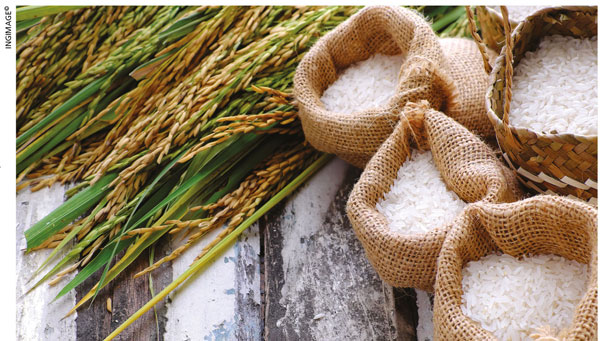FOOD SECTOR
THE FOOD SECURITY CRUNCH
Akila Wijerathna stresses the need to move away from producing staple foods
Food security and nutrition are at the top of the global development agenda today, due to the urgency to end hunger and promote sustainable agriculture. Food shortage is a serious problem with far-reaching long and short-term negative impacts – including starvation, malnutrition, increased mortality and political unrest.
There is a collective need to address this issue through emergency and long-term measures.
Food scarcity is caused by economic, environmental and social factors such as crop failure, overpopulation and poor government policies. Environmental factors determine which crops are produced in ‘agroclimatic zones,’ economic factors determine buying and production capacity, and sociopolitical factors determine food distribution.
With exponential population growth, the world is consuming more than it’s producing, leading to a decline in food stocks and storage, and higher food prices as a result of soaring demand amid low supply levels.
A population explosion has led to clearing agricultural land for human settlement, thereby reducing production. Arboreal destruction – particularly of tropical rainforests – has led to climatic changes such as prolonged droughts and desertification.
This growth in human numbers means heightened pollution as more fuel is used for vehicles, industry and domestic cooking. It leads to greater air and water pollution, which affect the climate and food production.
Economic factors affect farmers’ ability to engage in agricultural production. Poverty in developing countries has reduced their food production capacity as most farmers can’t afford seeds and fertiliser. They use inferior farming methods that cannot yield sufficient produce even with substantial use. Most poor people are unable to afford food due to the rising price of rice and other basic commodities.
Investment in agricultural R&D is very low in developing countries. Farmers in such regions use outdated farming practices, low yielding seeds and poor agricultural infrastructure, which limit production capacity. The global financial crisis led to higher food prices and reduced investments in agriculture in developed nations – and this resulted in lower food production.
Environmental factors have contributed greatly to food shortages. Climatic change has reduced agricultural production. Significantly, tropical forest loss has changed climatic patterns and rainfall seasons, and led to prolonged drought and desertification, which cannot support crop production.
Pollution comes in various forms – e.g. air, water and soil. Increased deposits of industrial effluent, farm and soil particles into bodies of water have led to pollution. Land degradation due to increased human activity has negatively impacted agricultural production. Natural disasters such as floods, tropical storms and prolonged droughts are on the rise, and have devastating impacts on food security particularly in developing countries.
Droughts are the leading cause of food scarcity globally – consecutive years of droughts have led to massive crop failures and loss of livestock.
Nutrition security implies physical, economic and social access to balanced diets, clean drinking water, safe environments and healthcare for everyone. Education and awareness are needed to utilise these services. Malnutrition has a complex aetiology, and prevention calls for awareness and access at an affordable cost. Children’s and women’s health, nutrition, education and decision making through empowerment are important for nutrition security.
Despite increases in agricultural productivity and overall food production, high levels of undernourishment in multiple forms persist across the developing world. The effectiveness of agricultural policies for improved nutritional outcomes depends on the importance of agriculture in the economy, specific nutritional challenges and structural transformation.
Improving access to farmland and water management should be prioritised. Governments should take steps to protect rural farmers’ rights to guarantee access to natural resources for small-scale family farmers, which would not be possible without water and seeds.
Agricultural policies are biased towards improving staple crops. So we need a ‘crop neutral’ policy that removes distortions and enables farmers to respond to market signals when making production choices. Promoting a diversified food system that improves the affordability of nutrient rich pulses, horticulture and livestock products should be a high priority for national food policies.
Enhancing farmers’ ability to diversify production would require high levels of investment in transportation, storage and market development. Investments are also required to reduce transaction costs for smallholder integration into non-staple food markets.
And diversifying diets to include protein and micronutrient rich food could provide new opportunities for agriculture led growth for smallholder farmers.




